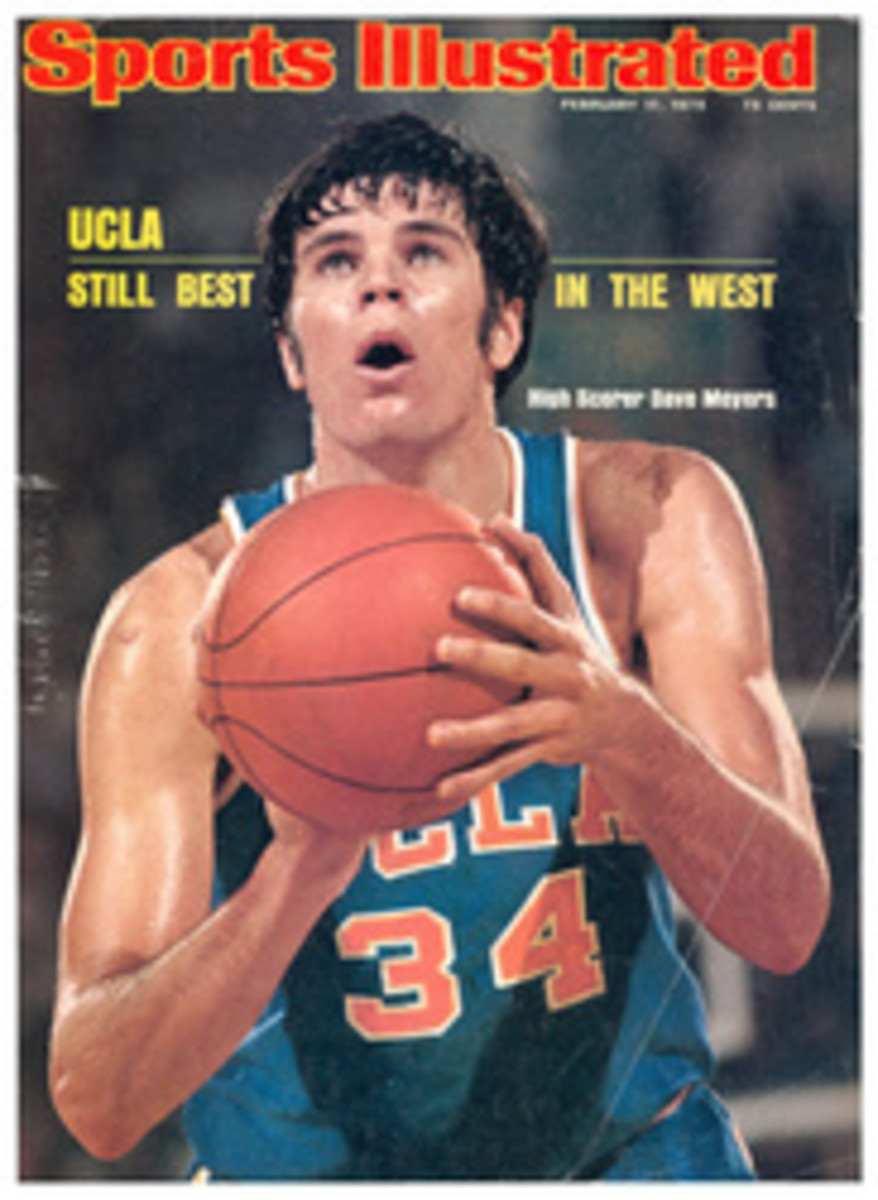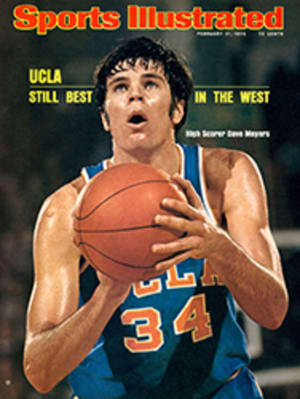
Eight feet away from glory
Somewhere in that basement of yours there is probably a dart board. Or maybe it's in the attic. Or playroom. Chances are you bought it for the kids. Maybe you tossed a dart yourself. But, after a while, it got to be a drag to keep aiming for the bull's-eye, and who could ever hit the darn thing, anyway? The board is probably still hanging there, a little dusty perhaps, with the telltale marks of errant darts visible on the wall.
Everyone has thrown a dart at some time or other, but how many of us have thrown a "serious" dart? And just what is serious? Bob McLeod, president of the prospering United States Dart Association, says, "A serious dart player is someone who knows the game." Sounds easy enough. But wait, he is not finished: "Someone who knows what you mean when you say 301, a ton, or three in a bed." If you answer a) Carl Yastrzemski's batting average in 1968, b) 2,000 pounds and c) a new porno movie, you are not at all serious about the game.
But, surprisingly, four million Americans know exactly what McLeod is talking about: a) a standard dart game, b) scoring 100 points on a turn and c) three darts that land in the same number. Serious darters in the U.S. have increased fivefold since 1970, and the case of McLeod himself is not atypical.
Now 39, he first picked up a dart six years ago. At the time he was the assistant to the president of a construction company. Nine months later he had quit his job, founded the USDA and started Darts Unlimited, importers of equipment from England. "I wasn't hooked right away," McLeod says, "but soon I was practicing a couple of hours a day and carrying a set of darts wherever I went." Even while watching television, he practiced, and he wore a hole in the living-room rug at the 8-foot mark.
Today McLeod devotes as many as 100 hours a week to his business and the USDA, but woefully few to his game, and it was he who got the darts flying at the recent U.S. Open in New York City. Twenty-six boards were set up for the 446 competitors in the Marc Ballroom, located 25 feet below scenic Union Square. The standard English "clock" board was used, a sisal target divided by thin wire spokes into 20 pie-shaped sections, with the bull's-eye (25 points) and double bull (50 points) at the hub. Ringing the board is the narrow "double" band, with the "treble" ring halfway to the center. The inventor of the clock board is unknown, but he was a clever fellow, to be sure, for if one misses the 20 by the merest fraction of an inch, one scores a lowly 1 or 5.
In the smoky ballroom, players in bowling-style shirts practiced alongside men in pinstripe suits. One competitor appeared in a ruffled dress shirt and black tie. Some answered to pungent names, like Dead-Eye Jack and Alibi Louie.
Everyone had his own distinctive style. Scottish-born John Allan, now the Atlanta champion, threw every set of three darts fluidly, in one continuous motion. Unlike other competitors, he kept his feet flat on the ground. Tommy Kerr of Kearny, N.J. flicked his out like Frisbees. And then there was Tex. Raymond Blackwood hasn't lived in Texas since World War II, but that's how it goes. His shirt had a map of the state emblazoned on the back with a dart aimed at Dallas. He wore a cowboy hat and string tie and had the loosest arm in the Marc, his delivery resembling that of a sidewinder slowly uncoiling in the sun. As much a showman as a dartsman, he threw over his shoulder and even kneeling. Two bull's-eyes out of three tosses while on your knees isn't bad.
And somewhere in the multitude that downed 4,440 bottles of beer in two days was Conrad Daniels, the 33-year-old general manager of a home improvement company in New Jersey. Daniels had never played in the Open before. And at first nobody paid much attention to him, though he was going unbeaten.
On the second day, with the singles competition whittled down to 32, the atmosphere was more intense. At stake was $12,000, the largest purse ever for a darts tournament. Paris Webb, a pretty 19-year-old Greenwich Village bartender who throws darts up to seven hours a day, had made it through the first session without losing a game—the first woman ever to gain the final 32 in the Open. But now Paris was up against Nick Virachkul, generally considered the best player in New York. Once a javelin thrower in Thailand, Virachkul took up darts when, like Paris, he found a job tending bar in Manhattan. He started practicing four or five hours a day. Virachkul beat Paris easily, but she said, "I still made darting history."
As soon as a Virachkul match was announced a crowd would form five-and six-deep behind him. On Virachkul's velvet vest were the scripted words ROBIN HOODS, the name of his team in the New York league. Cigarette in hand, he would lean over the line and pick out the difficult treble 20 with unerring accuracy.
The smart dart money was riding on the javelin arm when Virachkul met Daniels, the home-improvement man from New Jersey, in the finals. The match was to be two out of three games of 501, each player starting with 501 points and working his way down toward zero. The winner would have to finish with a double, i.e., with 32 points to go, a double 16 would be necessary. A miss, leaving, say, 24, would require the double 12. And so forth. Arithmetic is almost as important as darting skill in this game.
McLeod manned the electric scoreboard, a giant facsimile of the target with lights to indicate where the darts had landed. Daniels won the toss and elected to go first.
On his fourth turn Daniels fired a 180—like striking out the side on nine pitches—to move ahead. Two turns later, needing 80 to go out, he calmly shot a treble 16, double 16 to take the game. The crowd murmured in appreciation.
Virachkul strode up to the line confidently, the ever-present cigarette smoldering in his left hand. When he went out from 96 (20, treble 20, double 8) the crowd whooped. This was more like it.
Daniels waited for the noise to die down and fired a ton to start the final game. Virachkul countered with a 180 which had his fellow Robin Hoods patting their wallets. Undaunted, Daniels continued to throw good darts; Virachkul was slightly off the mark. "He looks better missing than most people do throwing 180s," commented McLeod. Daniels was close to a triumph—down to just 4—with Virachkul still alive at 56. As Virachkul's last chance at the double 10 slipped off the mark, the audience groaned. "Tough dart!"
Daniels stood on the side of the stage and sipped a Scotch, not his first of the day. No hurry. "Come on!" said someone. "Throw those darts!" And he did. Double 2. Game shot.
Daniels collected a silver cup, $1,200 and an all-expenses-paid trip to England, where on May 10 he will compete for the world championship, an event that has drawn 17,000 spectators. Daniels reflected on his introduction to darts: "I got hustled for $65 the first time. I never forgot that. The next time I played that guy I took him for $1,400. Now I only play for money or in tournaments."
Does he practice four or five hours daily like the others? "Naw, maybe 30 minutes. The important thing to me is my wife and kids; that comes way before darts." Spoken like a true hustler.
Meanwhile, Virachkul was receiving condolences. "I love sports," he said. "I want to be a champion at something and felt darts was my best bet."
And so it might be for you. Whisk away those cobwebs.
PHOTO
DANIELS SHOT TO FAME IN THE OPEN

